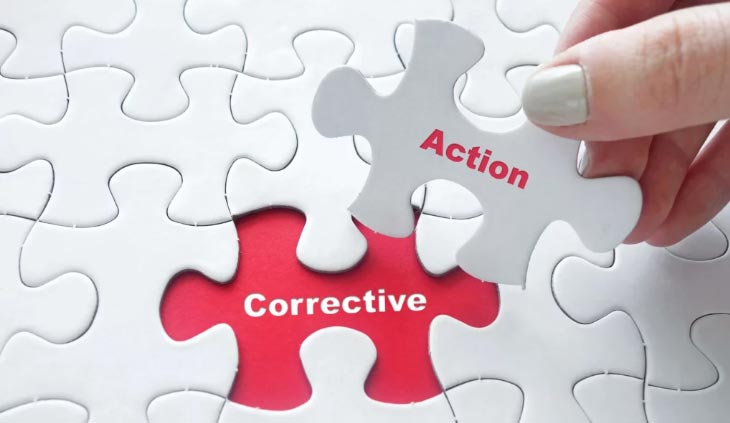
Correction and corrective action are two terms often used in quality management and process improvement, particularly within the context of business operations and the delivery of goods and services to clients. While these terms may seem interchangeable, they actually hold distinct meanings and play different roles in maintaining and enhancing the quality of everything we do and everything we deliver.
Correction refers to the immediate rectification of a detected defect, error, or nonconformity. It comes down to dealing with the symptom of the problem. Corrections are typically reactive measures taken to ensure that the immediate issue is resolved, and that the product or service is brought back into compliance with the desired quality standards. In essence, correction focuses on fixing the face value defect/issue and not necessarily the underlying cause. It is a crucial step in turning a situation around, especially where client dissatisfaction or safety issues in the workplace have occurred.
Corrective action on the other hand, goes beyond merely treating the symptom and delves into the realm of systematic problem-solving. Corrective action involves a comprehensive investigation into the root causes of the identified issue. The aim is not only to rectify the face value problem or symptoms but also to implement measures that prevent its recurrence and address potential issues that may arise from similar causes.
Corrective action focuses on identifying the systemic weaknesses or process gaps that allowed the problem to surface in the first place. It often includes a “deep dive” approach involving data analysis, trend monitoring, and process mapping. This serves to identify patterns and trends that can help in addressing not only the present concern but also future risks.
A good analogy here could be one of a fire in a workplace. If a fire erupts you raise the alarm, evacuate personnel, and extinguish the fire using the appropriate fire extinguisher. This would be considered a correction to the problem of the fire. You wouldn’t stand around while the office burns conducting an analysis as to how it came alight and typing up data for a root cause analysis. Later, when the fire is out, the Fire Department might analyse the damage and look for how it started. Let’s say they discover that some dodgy wiring has been installed into the building and they notify you. That’s your root cause analysis.
Your corrective action would be to have new, compliant wiring installed and to never use the previous electrical contractor again! You might even have a separate person double check that everything was put right properly, and we call this part of the corrective action process – verification.
We make corrections and perform corrective action all the time in day-to-day life both professionally and personally. In general, corrections are good for smaller, one off or isolated problems that have a low to moderate impact on our businesses or lives. Corrective action tends to be used where repetitive non-conformance occurs or where a major issue has arisen that impacts us greatly.
There is no point in conducting a root cause analysis for the workplace issue of “who took the last can of coke out of the fridge?” At the same time, repetitive breakdowns of key machinery should not be taken lightly and should be looked into properly. Correction and corrective action have their time and place respectively. The key differences between correction and corrective action lies in their scope and intent.
Both correction and corrective action are essential components of a robust quality management system. Corrections are vital for immediate damage control and customer satisfaction, while corrective actions contribute to continuous improvement and long-term prevention of quality issues. Organizations that effectively balance these two approaches can create a culture of quality consciousness, ensuring that products and services not only meet expectations but also exceed them over time.
